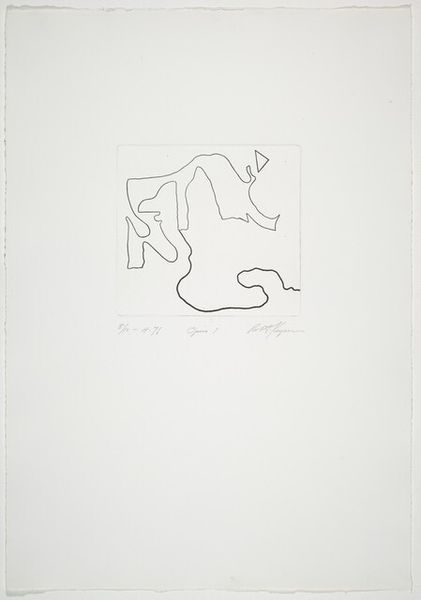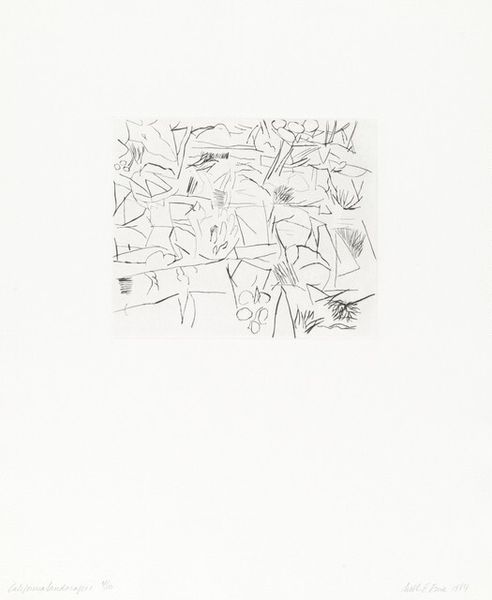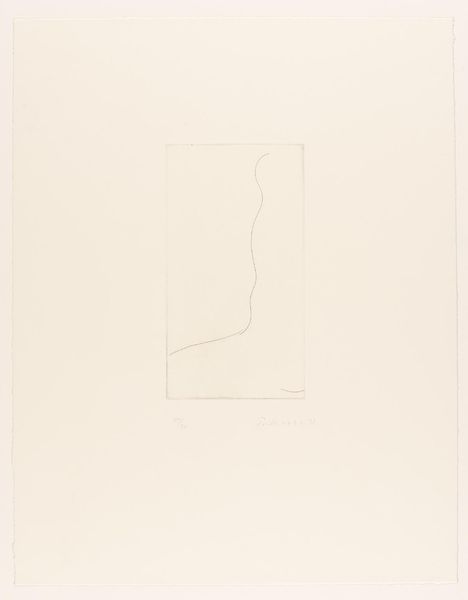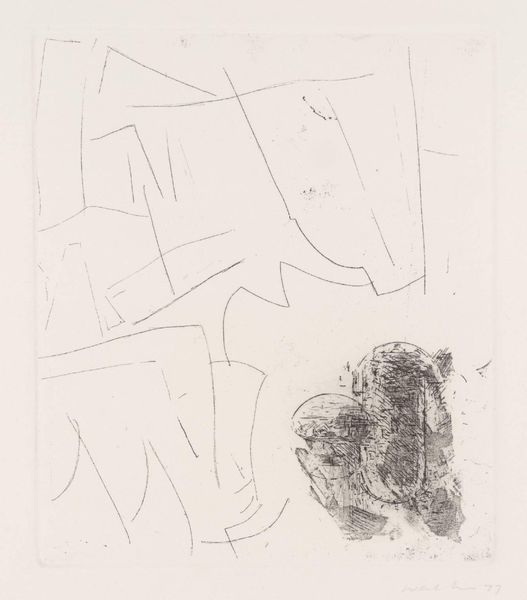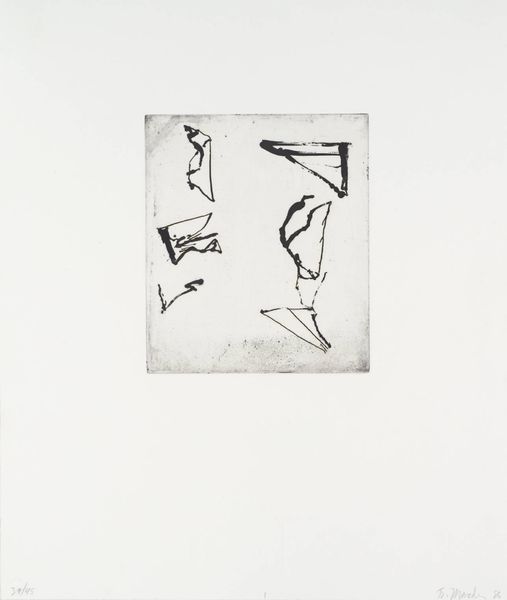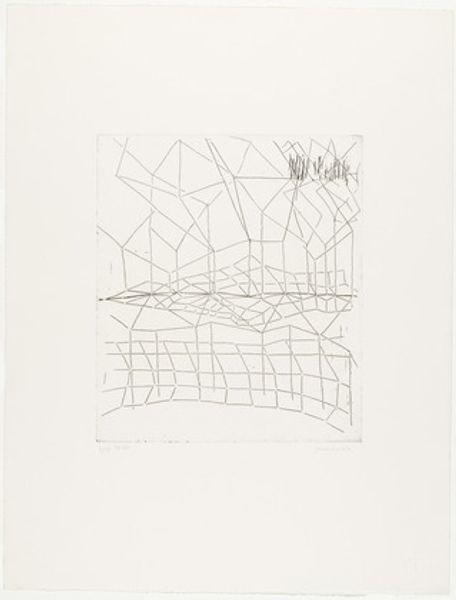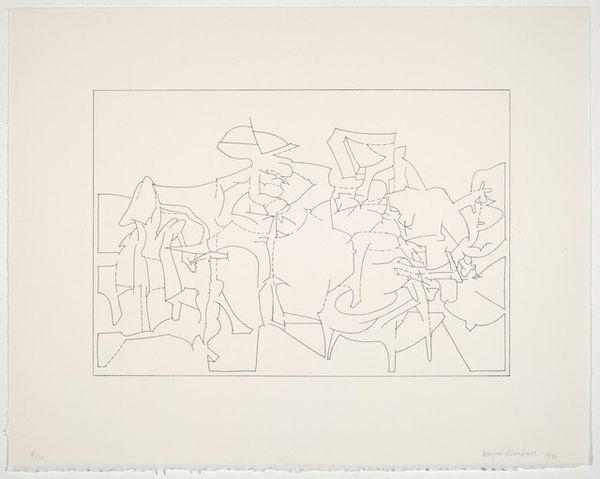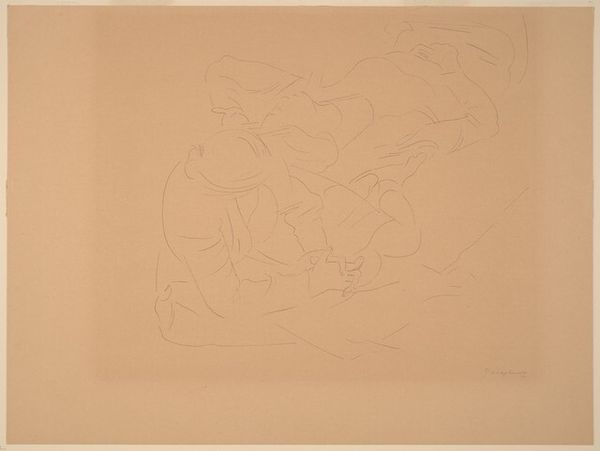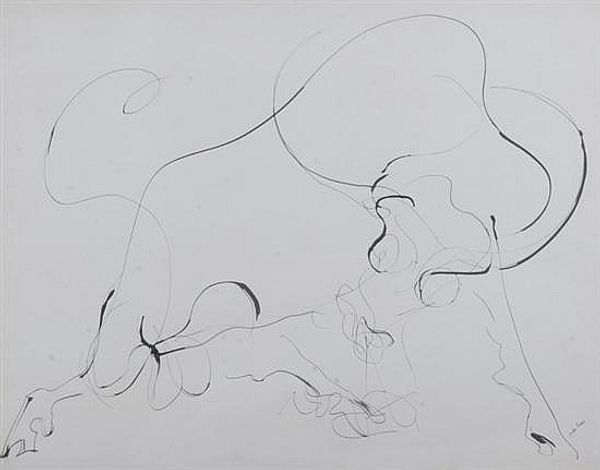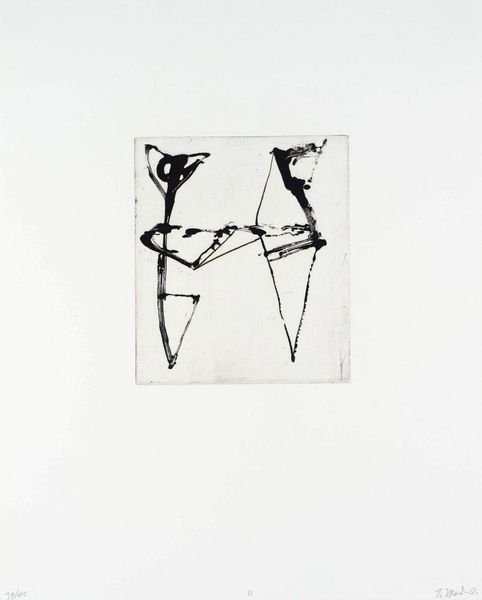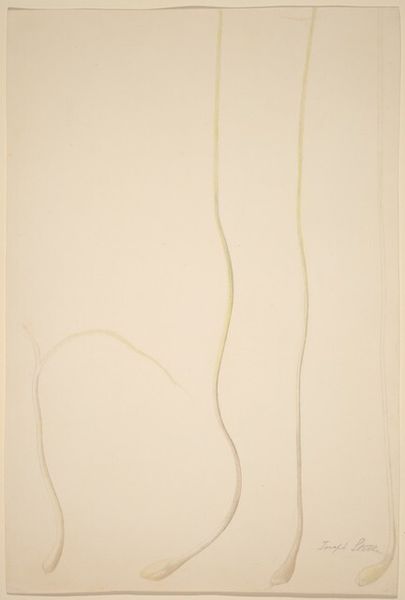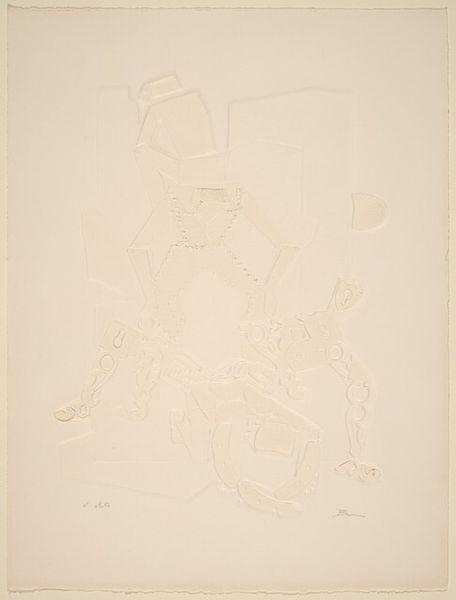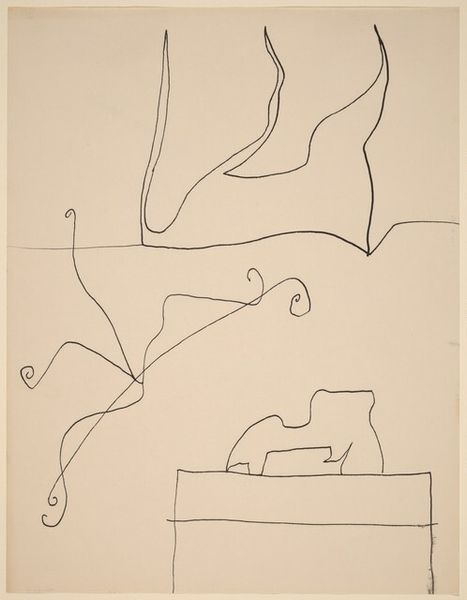
drawing, print, ink
#
drawing
# print
#
ink
#
abstraction
#
line
Dimensions: plate: 24 x 16.2 cm (9 7/16 x 6 3/8 in.) sheet: 50.6 x 34.7 cm (19 15/16 x 13 11/16 in.)
Copyright: National Gallery of Art: CC0 1.0
Curator: Standing before us is Robert Keyser’s "Ur-Var 3," created in 1976. It’s an intriguing print, an ink drawing that resides firmly in the realm of abstraction. Editor: My first impression is one of sparseness. The composition is strikingly minimal. It’s like catching glimpses of something half-formed, like symbols struggling to coalesce. Curator: Absolutely. Given the artist's abstract language, it is important to acknowledge the production itself. Consider the artist using ink to produce lines of variable thickness, a direct result of mark making. Editor: It’s interesting you mention mark making. What I see are hieroglyphs—suggestive, perhaps even fragments of a lost script. I find myself searching for connections between the scattered lines, trying to decipher a hidden message. Do the lines mean something? Curator: Or perhaps their meaning emerges from the active process itself. Keyser, like other process-based artists, valued the exploration of the raw physical actions by his body to guide his creation. Editor: But surely there’s more to it than just pure physical action? It’s undeniable that those short, abrupt lines possess a primitive quality—almost primordial, hence perhaps the title "Ur-Var." I find that these forms resemble primitive sketches with an underlying story from his imagination. Curator: I'd add that a line on paper is only that; there's no cultural encoding until someone experiences it, whether that person is the artist making the artwork, or a later spectator. In a capitalist economy, there's a clear relationship of labour when drawing for one's artistic vision versus drawing as a service for another individual's benefit. In a global art market that assigns the worth of the labor done to create this art to one individual—in this case Robert Keyser, there must also be the historical reality of who actually draws lines in other socio-economic conditions. Editor: That's quite a critical view. I still sense this drawing conveys a message with symbolic gestures or icons from a time now lost to humanity. "Ur" of course suggests a genesis point...Perhaps we are looking at a series of abstract visual representations to a lost era when abstract shapes meant real concepts. Curator: On the topic of abstraction, it is a challenge to discuss it as only an element, and instead we should see the artistic labour to reduce these symbolic lines of communication into this abstracted vision of line. That may give some clue to "Ur." Editor: It may take multiple visits and an extended time to come closer to interpreting all these lines! Curator: Yes. But as far as his labor is concerned, it is a worthwhile subject of continued discussion.
Comments
No comments
Be the first to comment and join the conversation on the ultimate creative platform.
